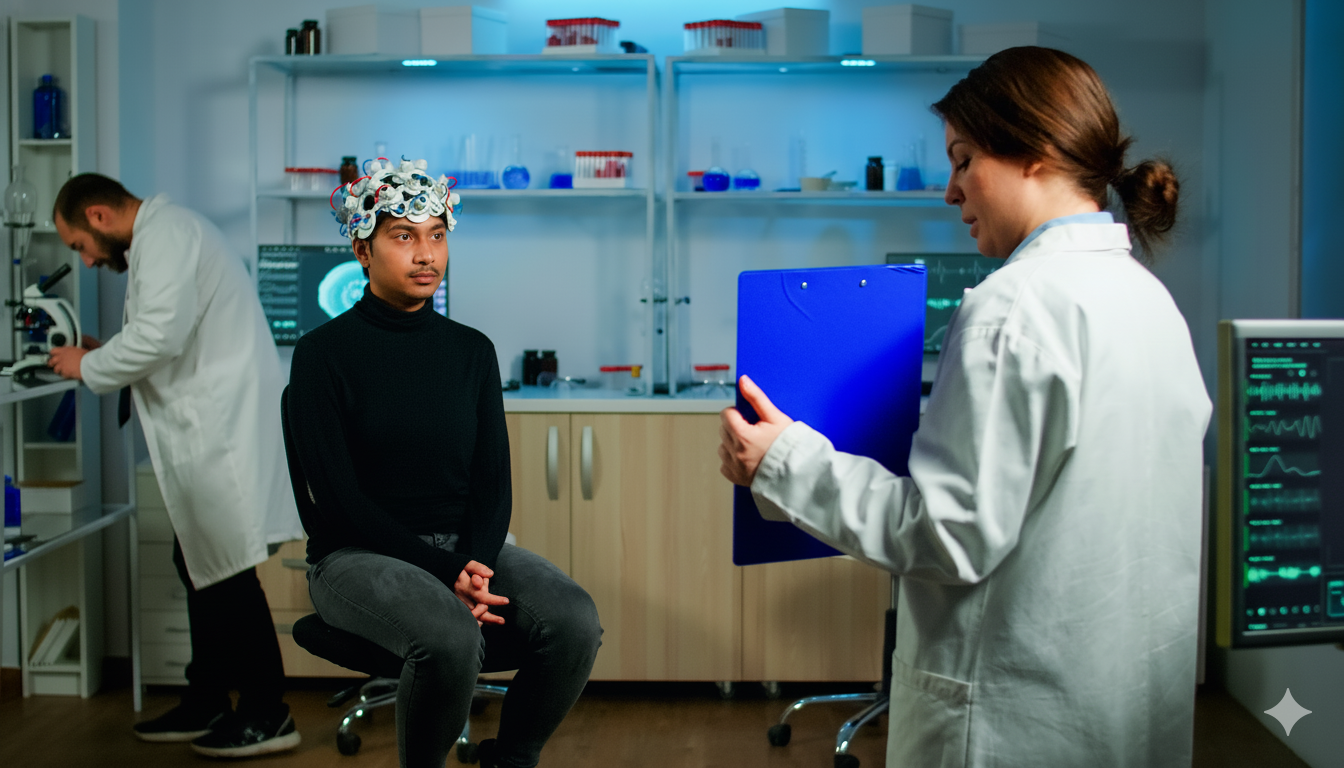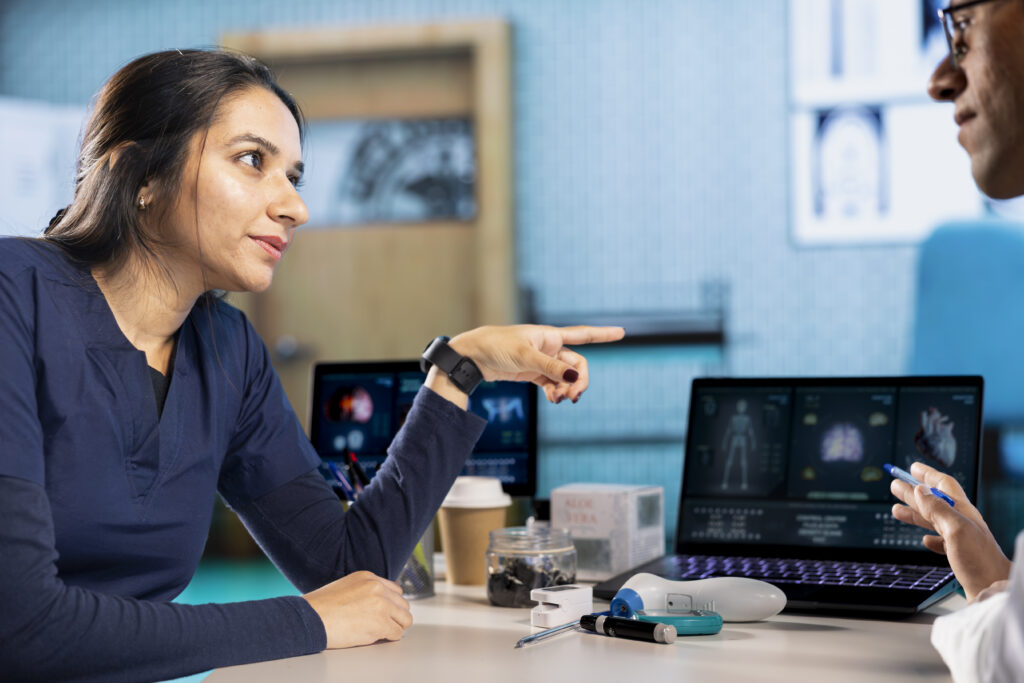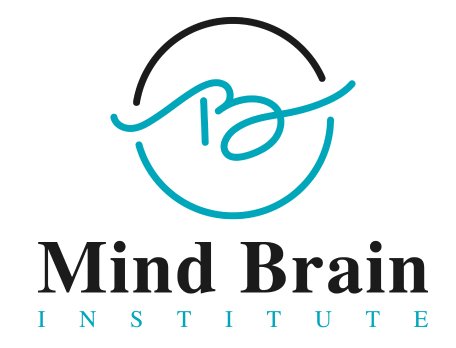
- Posted By Dr. Anuranjan Bist
- Comments 0
One Day TMS a Breakthrough in Modern Brain Stimulation Therapy
Depression is much more than sadness; it’s a complex brain-circuit problem that takes over how a person thinks, feels, and functions. Millions continue to suffer despite antidepressants, therapy, or lifestyle changes. According to the report, close to 30% of those with MDD develop treatment-resistant depression (TRD), which means that medications simply don’t work for them.
The recovery in India is even more difficult due to stigma, late diagnosis, and inaccessibility of specialized care. That is why new non-invasive methods of depression treatment like One Day TMS are necessary among patients in need of quick, effective, and non-drug methods.
One Day TMS is a new and faster form of TMS therapy that is meant to provide a quick remedy to depression. Unlike traditional TMS therapy for depression, which requires daily sessions for 6 weeks, this model condenses the entire treatment into one intensive day using the scientifically proven ONE-D Protocol.
What Is the ONE-D Protocol and Why Is It Central to One Day TMS?
The ONE-D Protocol (Optimized Neuroplastogen-Enhanced Depression treatment) is the scientific foundation behind One Day TMS. It is an advanced TMS therapy designed to stimulate mood-regulating brain circuits rapidly, intensively, and safely within a single day.
While standard TMS treatment requires 30-40 sessions, the ONE-D Protocol compresses this into 20 short iTBS sessions delivered over 8-10 hours. This accelerated framework is based on modern neuroscience: spaced learning, synaptic strengthening, and targeted neuroplasticity.
In simpler terms, the ONE-D Protocol acts like an intensive “reset” for the brain, helping dormant neural pathways reactivate efficiently.
How Does One Day TMS Work Using the ONE-D Protocol?
The ONE-D Protocol combines three evidence-backed components to make One Day TMS highly effective:
Advanced TMS / iTBS Brain Stimulation
TMS (Transcranial Magnetic Stimulation) utilizes magnetic pulses for the stimulation of the left dorsolateral prefrontal cortex (DLPFC), which is the region of the brain responsible for mood and emotional regulation. The ONE-D Protocol utilizes Intermittent Theta Burst Stimulation (iTBS), a 3-minute rapid TMS treatment shown to produce lasting neuroplastic changes.
Repeating these sessions 20 times a day, spaced out at timed intervals and reinforces neuronal pathways similar to intense physical training.
Neuroplasticity-Enhancing Medicines
Before the One Day TMS sessions begin, patients receive carefully selected medications that enhance neuroplasticity, under expert medical supervision. At Mind Brain Institute, we use evidence-based adjuncts such as:
D-Cycloserine: A mild NMDA receptor modulator, which enhances learning and neuroplasticity by helping the brain “learn” new, healthy emotional responses faster.
LDX: This is a stimulant that increases alertness, focus, and prefrontal activation to ensure maximum responsiveness during stimulation.
These adjuncts are always prescribed after a complete psychiatric and physical evaluation, ensuring drug-free depression treatment principles remain safe and controlled.
Spaced-Learning Neuroscience Model
The structured 30 minutes rest period comes after each iTBS session. This spaced learning effect has been shown to hasten neural consolidation and thus accelerated TMS therapy is much more effective than daily therapy.
What Is Science Behind One Day TMS and the ONE-D Protocol?
The ONE-D Protocol is rooted in neuroplasticity science, which is the natural capacity of the brain to rewire, strengthen, and reconfigure healthy connections. One Day TMS activates mood-related brain circuits repeatedly by administering several short TMS/iTBS sessions within a day, therefore making them more efficient. Key findings show:
- More than 90 percent of the patients had reported a significant reduction in depressive symptoms.
- Over 70 percent of them responded to a one-day treatment with complete remission in 6-12 weeks.
- No serious side effects or complications were reported.
These outcomes significantly outperform standard TMS therapy for depression and many traditional antidepressant regimens. At Mind Brain Institute, One Day TMS is delivered under strict U.S.-standard protocols with full psychiatric supervision, ensuring clinical safety and credibility.
Who Can Benefit the Most from One Day TMS?
One Day TMS is ideal for individuals who:
- Have major depressive disorder and haven’t responded to medications
- Experience treatment fatigue
- Cannot commit to 6 weeks of daily visits
- Prefer a non-invasive, drug-free depression treatment
- Want fast depression treatment with science-backed outcomes
- Tried standard TMS treatment but need a more intensive approach
Conditions It May Help
- Major Depressive Disorder (MDD)
- Persistent Depressive Disorder (Dysthymia)
- Post-Traumatic Stress Disorder (PTSD)
- Anxiety and Emotional Dysregulation
- Cognitive sluggishness or “brain fog” associated with chronic stress or burnout
(Note: ONE-D is currently approved and most evidence-based for depression. Other applications are under clinical study.
How Safe Is One Day TMS and the ONE-D Protocol?
TMS treatment is FDA-approved, globally recognised, and considered one of the safest brain stimulation therapy options today.
Common mild effects of One Day TMS include:
- Temporary headache
- Scalp discomfort
- Fatigue due to multiple sessions
- Mild sleepiness
There is no memory loss, no personality change, and no seizure risk for medically screened candidates. All sessions at Mind Brain Institute are supervised by trained psychiatrists and technicians, with CCTV monitoring and emergency readiness to ensure complete patient safety.
How Soon Can You Expect Results After One Day TMS?
Although stimulation occurs in a single day, the brain keeps getting better over weeks since it keeps experiencing neuroplasticity. Normal recovery timeline:
- Week 1-2: Improved mood, sleep and reduced rumination.
- Week 3-6: More Motivation, Vitality, and Clarity.
- Week 6–12: Full emotional resilience and remission
This aligns closely with research on accelerated TMS therapy and advanced TMS therapy outcomes.
How Is One Day TMS Different from Standard TMS Therapy?
Aspect | Standard TMS | One Day TMS (ONE-D Protocol) |
Duration | 6 weeks | 1 full day |
Sessions | 30–40 | 20 |
Mechanism | Daily stimulation | Spaced-learning neuroplasticity |
Adjunct Medicines | Not used | Neuroplasticity enhancers |
Remission Rate | 30–40% | Up to 70–80% |
Suitability | Flexible schedule | Ideal for busy individuals |
This makes One Day TMS one of the most efficient forms of magnetic stimulation therapy available today.
Is One Day TMS Safe for Everyone?
ONE-D TMS is safe for most adults with depression, but not suitable for:
- Patients who have pacemakers, metallic implants around the head.
- Individuals that have epilepsy or uncontrolled seizures.
- Patients under combinations of sensitive drugs.
- Women who are pregnant or breastfeeding (scanty safety information available)
Any patient receives a detailed psychiatric and medical screening prior to approval.
How Does One Day TMS Compare to Ketamine-Assisted Therapy?
Feature | ONE-D Protocol | Ketamine Therapy |
Mechanism | Magnetic brain stimulation | NMDA modulation |
Consciousness | Fully awake | Mild altered state |
Duration | 1 day | 4–6 infusions |
Ideal For | Non-drug approaches | Psychedelic-assisted healing |
Integration | Neurofeedback/yoga | Psychotherapy |
Both TMS and Ketamine-Assisted Therapy provide quick relief. In some scenarios, mental health professionals may recommend using both treatments together.

How Is One Day TMS Transforming Mental Health Care in India?
Powered by the ONE-D Protocol, One Day TMS provides a quicker, more accessible, neuroscience-driven alternative for thousands of people in need. Mind Brain Institute is defining the future of non-invasive treatment of mental health in India through the combination of brain stimulation therapy, neuroplastic enhancement, and holistic aftercare.
FAQ
Is the ONE-D Protocol TMS painful?
No. One Day TMS is a painless treatment which is not invasive. TMS therapy is only accompanied by a light tapping sensation on the scalp by most people. It has no electricity, no shock, no anesthesia, and no downtime to recovery.
How quickly will I start feeling better after One Day TMS?
Most patients will see improvement between 2-4 weeks and the improvements will continue until 12 weeks, as the brain enhances new neural pathways. This is in line with the world studies on accelerated TMS therapy and advanced TMS treatment outcomes.
Can One Day TMS be combined with antidepressants or therapy?
Yes. TMS therapy is safe to use in conjunction with your current medications and psychotherapy. Mind Brain Institute collaborates with your treating psychiatrist or therapist to create a smooth, integrated care plan that is tailored to your needs.
How long do the benefits of the ONE-D Protocol last?
The majority of the patients have a lasting effect of 6-12 months. Others opt to have periodic booster sessions or supportive therapies, including neurofeedback, mindfulness, or yoga to ensure long-term emotional resilience.
Is One Day TMS available in India?
Yes. One of the earliest institutes in India to provide the ONE-D Protocol in U.S.-standard safety and clinical protocols, Mind Brain Institute, New Delhi, is providing Indian patients with world-standard accelerated TMS therapy.
How much does One Day TMS cost?
The cost will be based on your clinical assessment, the prescriptions given, and what you are planning to do after the treatment. We offer clear and tailor-made packages in your consultation so that you can know exactly what investment is required in this high-tech treatment.


